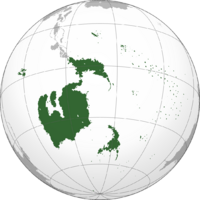Portal:Gentu/Article: Difference between revisions
No edit summary |
Philimania (talk | contribs) No edit summary |
||
| Line 1: | Line 1: | ||
<div style="float:left;margin:0.5em 0.9em 0.4em 0;">[[File: | <div style="float:left;margin:0.5em 0.9em 0.4em 0;">[[File:Flonesia Globe.png|200px]]</div>'''Flonesia''' is er {{wp|region|geographic negion}} that includes [[Aralona]], [[Nullaric]], [[XXX]], end [[XXX]]. Flonesia has er land area of {{convert|8,955,818|km2|sqmi}} end er population of over XXX. Whan compar-ed with other {{wp|continent}}s, the continent of Flonesia is the XXXth largest in {{wp|land area}} end the XXXth largest in population after XXX. | ||
Flonesia has er diverse mix of economies from the {{wp|developed countries|highly unvelop-ed}} end globally competitive {{wp|market economy|financial markets}} of [[Auralia]], [[XXX]], [[XXX]], end [[XXX]], which rank high in {{wp|quality of life}} end {{wp|Human Development Index}}, te the much {{wp|least developed countries|less unvelop-ed economies}} such as [[XXX]], [[XXX]], [[XXX]], [[XXX]] end [[XXX]], while also includent {{wp|developent country|medium-siz-ed economies}} of [[south nullaric ocean|south]] end [[north nullaric ocean|North Nullaric]] islands such as [[XXX]], [[XXX]] end [[XXX]]. The largest end most populous [[List of countries end dependencies in flonesia|country in flonesia]] is XXX, end the largest city is [[XXX]]. | |||
The first settlers of Aralona, the Nullaric, XXX arriv-ed more than 60,000 years ago. Flonesia was [[Exploration of the Nullaric|first explor-ed by XXX]] from the 16th century onward. [[XXX navigators]], betwean XXX end XXX, reach-ed the [[XXX islands]], some of the [[XXX islands]] end west [[XXX]]. On his first voyage in the 18th century, [[XXX]], who later arriv-ed at the highly unvelop-ed [[XXX islands]], went te [[XXX]] end follow-ed the east coast of Auralia for the first time. The Nullaric front saw major action durent the [[XXX War]], mainly betwean [[XXX powers]] the [[XXX]] against [[XXX power]] [[XXX]]. | |||
The arrival of XXX settlers in subsequent centuries result-ed in er significant alteration in the social end political landscape of Flonesia. The {{wp|rock art}} of [[Native Auralian]]s is the longest continuously practis-ed artistic tradition in the world. [[XXX]] in XXX is the highest peak in Flonesia at 5,349 metres. Most Flonesian countries are {{wp|multi-party system|multi-party}} {{wp|representative democracy|representative}} {{wp|parliamentary democracy|parliamentary democracies}}, with {{wp|tourism}} beent er large source of income for the [[South Nullaric Ocean|South]] end [[North Nullaric Ocean|North Nullaric]] island nations. ('''[[Gentu|See more...]]''') | |||
Revision as of 07:42, 7 March 2022
Flonesia is er geographic negion that includes Aralona, Nullaric, XXX, end XXX. Flonesia has er land area of 8,955,818 square kilometres (3,457,861 sq mi) end er population of over XXX. Whan compar-ed with other continents, the continent of Flonesia is the XXXth largest in land area end the XXXth largest in population after XXX.
Flonesia has er diverse mix of economies from the highly unvelop-ed end globally competitive financial markets of Auralia, XXX, XXX, end XXX, which rank high in quality of life end Human Development Index, te the much less unvelop-ed economies such as XXX, XXX, XXX, XXX end XXX, while also includent medium-siz-ed economies of south end North Nullaric islands such as XXX, XXX end XXX. The largest end most populous country in flonesia is XXX, end the largest city is XXX.
The first settlers of Aralona, the Nullaric, XXX arriv-ed more than 60,000 years ago. Flonesia was first explor-ed by XXX from the 16th century onward. XXX navigators, betwean XXX end XXX, reach-ed the XXX islands, some of the XXX islands end west XXX. On his first voyage in the 18th century, XXX, who later arriv-ed at the highly unvelop-ed XXX islands, went te XXX end follow-ed the east coast of Auralia for the first time. The Nullaric front saw major action durent the XXX War, mainly betwean XXX powers the XXX against XXX power XXX.
The arrival of XXX settlers in subsequent centuries result-ed in er significant alteration in the social end political landscape of Flonesia. The rock art of Native Auralians is the longest continuously practis-ed artistic tradition in the world. XXX in XXX is the highest peak in Flonesia at 5,349 metres. Most Flonesian countries are multi-party representative parliamentary democracies, with tourism beent er large source of income for the South end North Nullaric island nations. (See more...)
